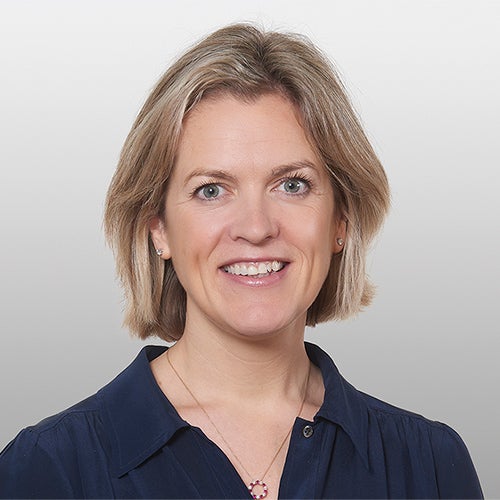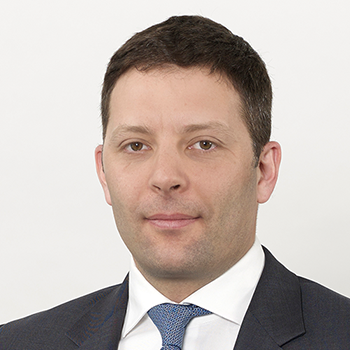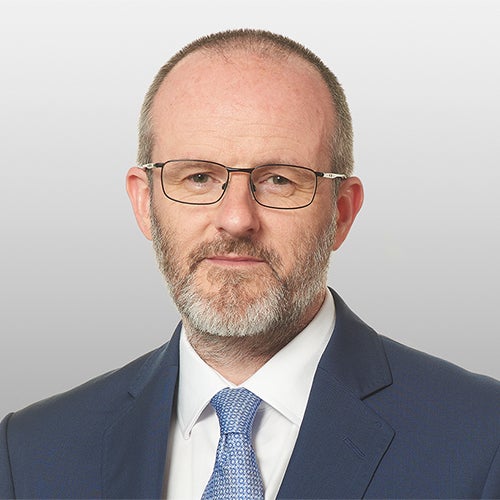Stock picking for ‘income today, income tomorrow’ – A conversation on UK Equity
Transcript
Hello, and thank you for joining us again today as we catch up with James Goldstone and Kieran Mallon, portfolio managers of the UK Equity High Income Fund. In our last video, we talked about the portfolio construction of the fund and how the team carefully balanced the stocks between income today and those that offer income tomorrow. But what we didn't emphasize was that James and Kieran are fundamentally stock pickers at heart.
And so today, what we're going to do is explore some of the holdings that they have in the fund, how they fall into either the income today or income tomorrow camp, and what they bring to the portfolio. So, Kieran, if we can start with you, please, why do we talk about an income today name? Should we talk about National Grid?
Of course. National Grid operates the electricity transmission network in England and Wales, and also distributes electricity to homes and businesses in England and Wales. As a regulated utility that is well managed, we get a stable and steady return, and a good portion of that is in the dividend. So it's got a good dividend yield. And because the economy is electrifying to decarbonize, the prospects for growth and investment are improving for National Grid.
So there's also good prospects for that dividend to grow in future. Okay, great. And then another area where there's been a lot of income recently through share buybacks and dividends is financials. So James, Lloyds—I believe you're holders of Lloyds. Is that correct?
We are. It's the biggest book of loans to the UK economy, across both retail—where it's mainly mortgages—and also commercial, along with the other banks. It's had a really strong tailwind. As interest rates have normalized, the profits increased four times. Crucially, though, that hasn't required any additional capital to be retained in the business. And so the dividend has also increased four times. The yield today is above the FTSE All-Share yield. And we see a really strong flow of income which is generating income today for the portfolio to help us meet that income target.
Okay, great. So that's two income today names. But on income tomorrow—Kieran, Next. It's a name you've followed for a very long time. Can you expand on Next please, and what it brings to the portfolio?
The clothing retailer Next has been incredibly successful. It's been successful because it's invested in itself—created its own IT systems and highly efficient warehousing. That's enabled it to grow into one of the leading online clothing retailers in the UK and exploit growth opportunities, selling third-party brands and expanding overseas. There's hopefully quite a lot more international expansion to come. It's done that while focusing on profitability and being really careful with shareholders' capital. That has meant a good ordinary dividend and a growing ordinary dividend.
And while it invests for growth, the expectation is that there should be more dividend to come in the future as the business grows. Okay, so Next is a very clear income tomorrow story. If you think about another sector that's been very popular recently—defense, for all the obvious reasons—Babcock. James, can you expand on Babcock, please?
Babcock is historically a UK defense contractor. The management team came in about five years ago, and they spent that time really reinforcing the relationship with the UK government, so that the financial outcomes for Babcock today much better represent the absolutely essential nature of what it does—things like maintaining a fleet of nuclear submarines at a very high end.
They've also expanded on the ambition to sell those same products and services overseas, which is working, but we think it's at a relatively early stage. Now that the NATO spending targets are out, this is a sector that really is seeing demand growth. Babcock is investing a long way ahead of the historic rate to be able to deliver that growth.
And the shares have done very well—they're up 130% year to date. So that naturally means that the yield today, for both those reasons, is lower. But as the growth comes through, we really do see the prospect for that income stream to grow into the future and deliver the portfolio with income tomorrow.
Yeah, so another very clear income tomorrow story. Thank you both. If you've got any questions, please don't hesitate to get in touch. Thank you very much.
Key takeaways
The Invesco UK Equity High Income Fund (UK) follows an investment strategy built around the concept of ‘income today, income tomorrow’, aiming to deliver both immediate and sustainable long-term income and capital growth for investors.
‘Income today’ captures those companies that have the willingness and ability to pay a dividend in order to maximise shareholder returns such as National Grid and Lloyds, both held in the Fund.
‘Income tomorrow’ focuses on companies that have identified and are actively reinvesting in growth opportunities and so may offer lower dividend yields today but have the potential to grow dividends in the future, such as Next and Babcock.
Please click on the ‘chapters’ button, in the bottom right of the video, to jump to the following sections.
00:00 – Introduction
00:42 – ‘Income today’ stock example: National Grid Plc
01:42 – ‘Income today’ stock example: Lloyds Bank
02:22 – ‘Income tomorrow’ stock example: Next plc
03:27 – ‘Income tomorrow’ stock example: Babcock International Group plc
Invesco UK Equity High Income Fund (UK)
The Invesco UK Equity High Income Fund (UK) invests at least 80% of its assets in UK-based equities, aiming to deliver a high level of income and long-term capital growth.




